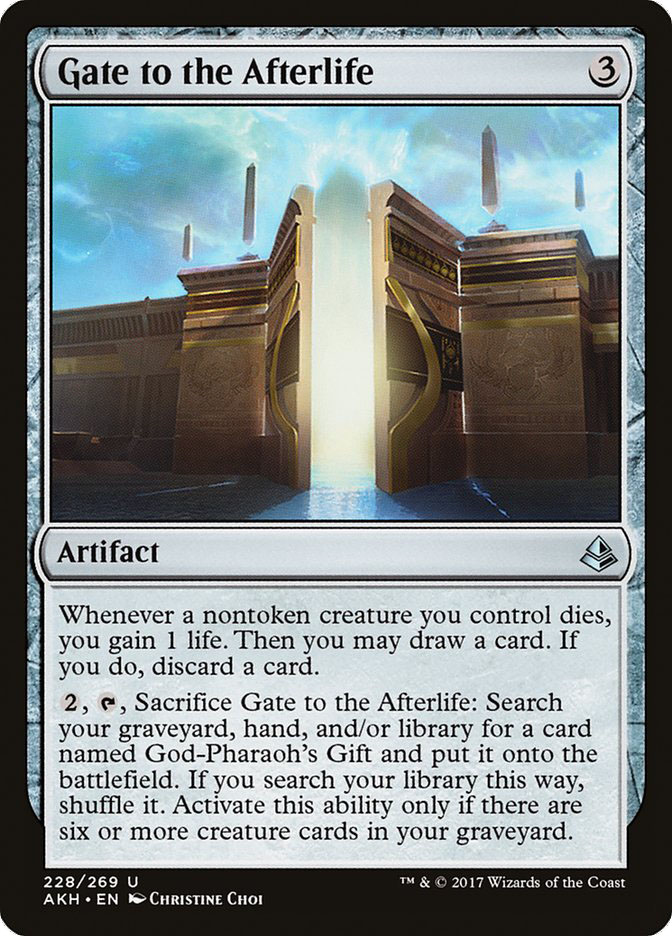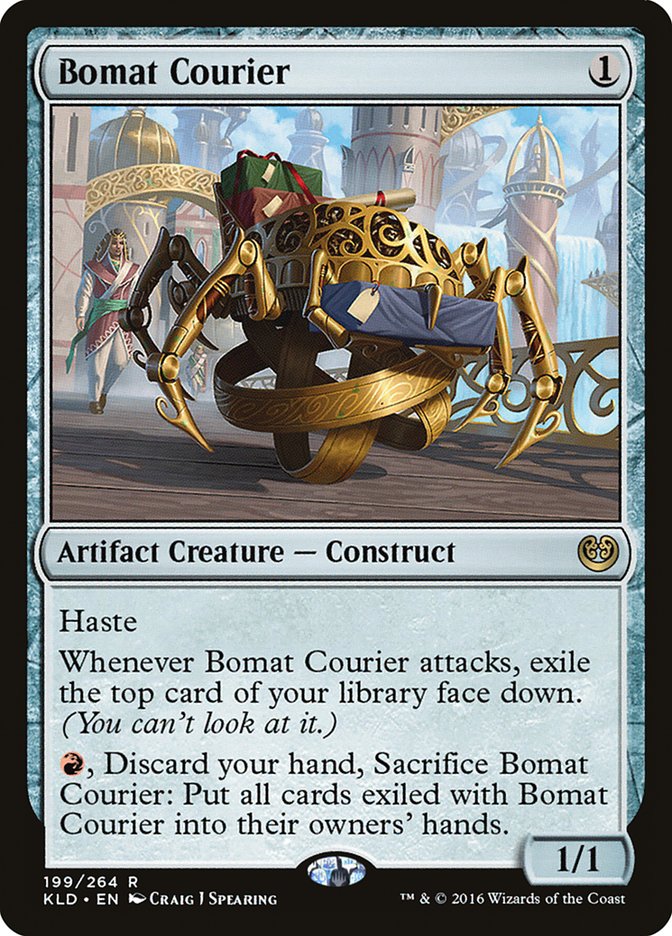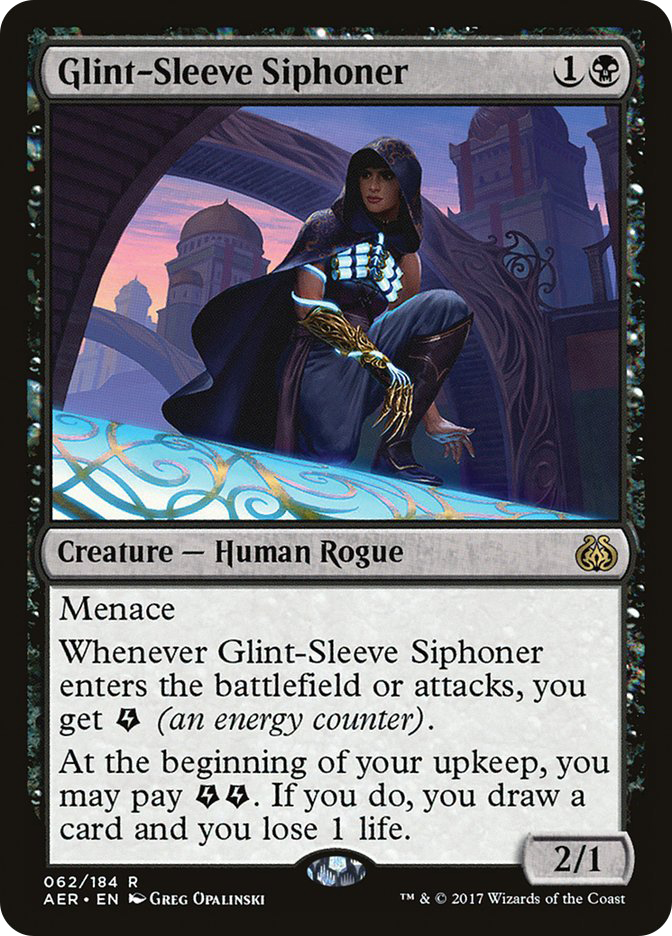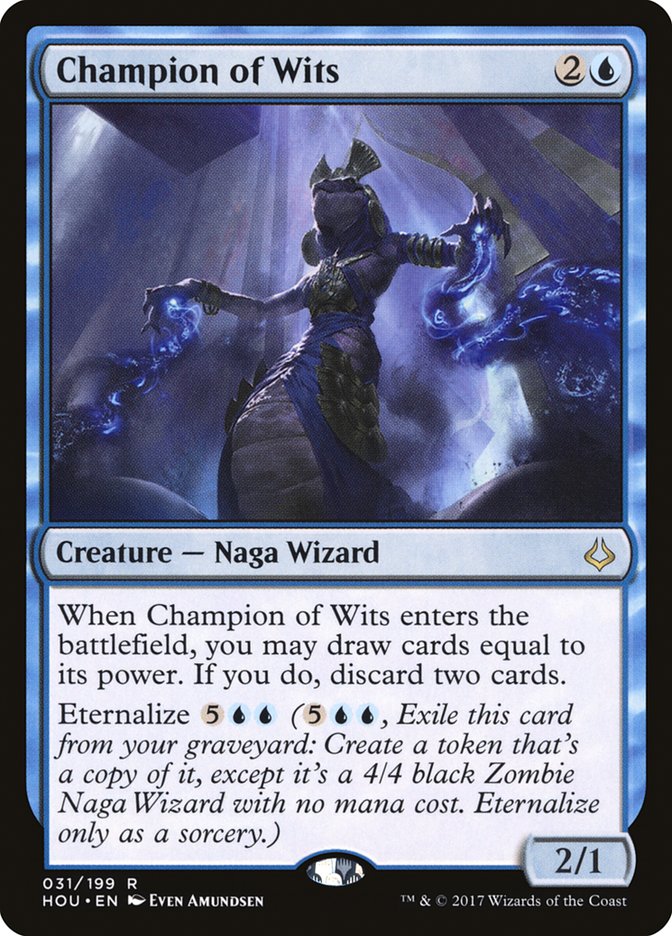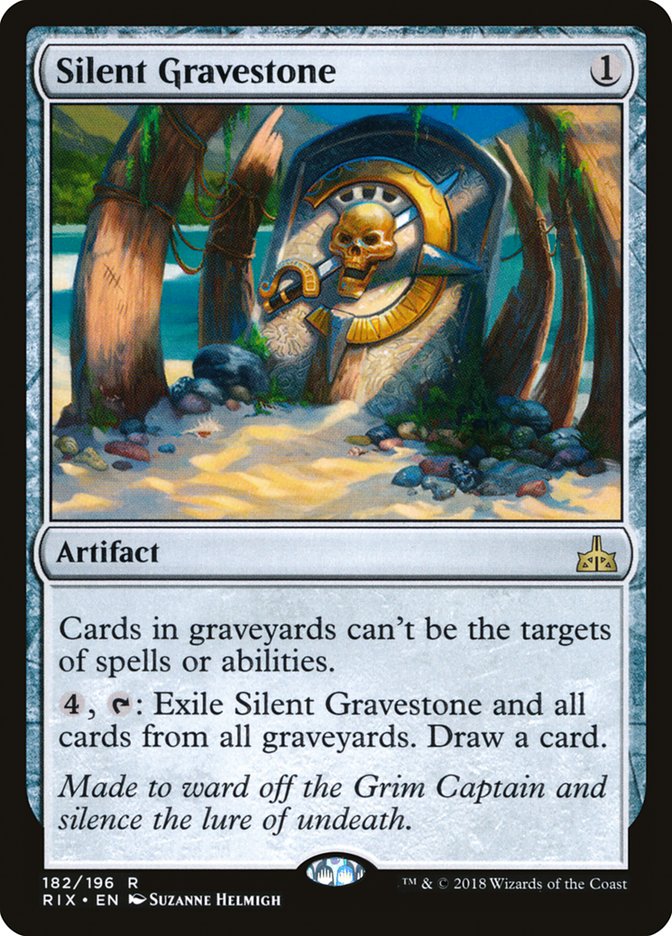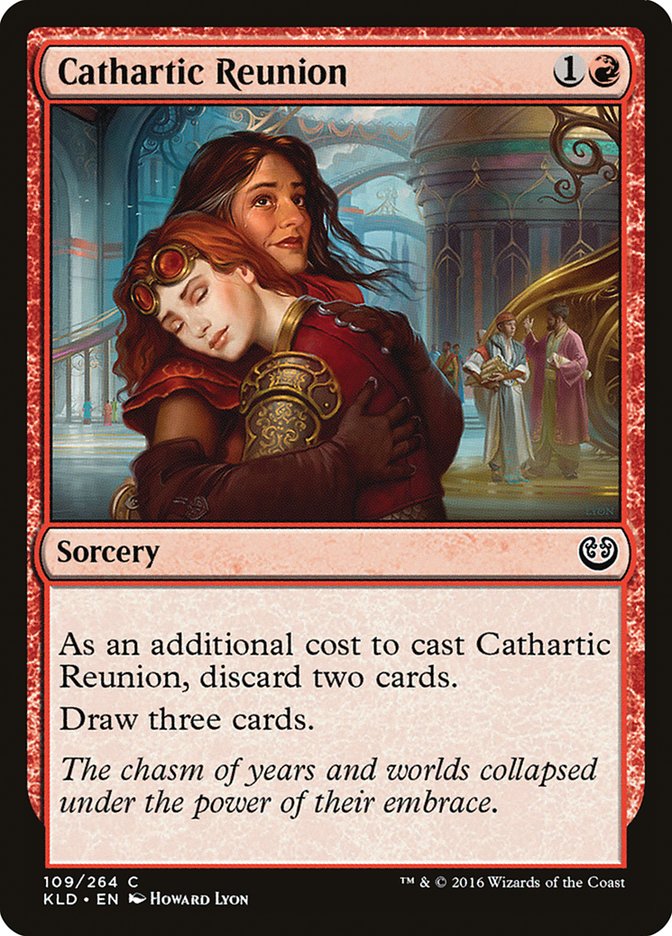Sometimes, tournaments go your way. You draw the right cards at the right times, you don’t mulligan much, your opponents stumble at key junctures, and your matchups are all favorable.
Grand Prix Phoenix was not one of those tournaments for this author.
And that’s okay! Sometimes, tournaments do not go your way (unless you’re Seth Manfield) and part of being a strong Magic player is learning the kind of Zen that allows you to accept these disappointments.
Here is the Grixis Death’s Shadow list I played; I highly recommend it to everyone who is unsure of what to play in their next Modern tournament. It’s possible to add another Engineered Explosives over a Liliana, the Last Hope for Humans and Hexproof if that is a concern, or possibly a Collective Brutality if Burn is what you fear. The Izzet Staticaster is cuttable as well.
It’s even possible to play only seventeen lands, but I’m comfortable with everything going on here, and we happened upon a last-minute piece of tech in the sideboard that covers two bases with one card.
Creatures (16)
Lands (17)
Spells (27)

Abrade was a nice last-minute pickup that added density of anti-artifact cards against Chalice of the Void decks, Tron, Lantern, and Affinity while retaining the important properties of being able to kill Mantis Rider and Mirran Crusader. It can even break an Aether Vial against Humans if they are leaning on their Vial particularly hard in a given game.
Abrade is truly stellar in Modern, and the utility of having modal spells in your Modern sideboards is wonderfully exemplified here. Unfortunately, this means that Rakdos Charm is currently not the modal spell of choice, which means that Dredge and Living End have slightly better matchups against you than they otherwise would.
So what happened in Phoenix? Mana flood, whiffing on key cards at key moments, and the ever-irksome Burning Inquiry conspired to keep me just short of a reasonable record. However, this deck still boasts a fine matchup against much of Modern, combining pressure, disruption, and the combo finish of a Tiger Uppercut (excuse me, Temur Battle Rage). Brad Carpenter went from little knowledge of the archetype to a solid 11-4 finish, despite his own admitted misplays, and claimed that he might have made Top 8 had he been a bit better at managing life totals in the close games.
We’ll touch on more Modern technology over the next few weeks as we explore Jace midrange decks like U/W Flash, U/B Midrange, Esper Souls, Jeskai Flash, U/R Breach, and Grixis Midrange, but there is more exciting news afoot in Standard, of all places. My old flame, Gate to the Afterlife, is back in a new shell that looks remarkably close to a ban-worthy engine deck.
Pre-rotation, Insolent Neonate enabled an all-in God-Pharaoh’s Gift deck that popped up as a powerful strategy towards the tail end of the format, but with the loss of the Neonate, the deck lost the density of one-drops it needed to compete. The presence of Abrade seemed like it shut the door on all-in Gift decks, and the alternatives of U/B Gift and U/W Gift popped up as slower multifaceted strategies that could compete going long while presenting the opportunity for busted openings that overpowered stumbling opponents.
Fanatical Firebrand, Combat Celebrant, and the not-so-secretly busted Bomat Courier are here to say “not so fast.” Let’s have a look at TombSimon’s list from a recent Magic Online 5-0 performance and break down why it’s a powerful choice:
Creatures (28)
- 4 Bomat Courier
- 4 Minister of Inquiries
- 2 Trophy Mage
- 4 Walking Ballista
- 4 Combat Celebrant
- 2 Vizier of Many Faces
- 4 Champion of Wits
- 4 Fanatical Firebrand
Lands (12)
Spells (20)
Sideboard

Make no mistake: this is a combo deck. There is a combination of cards in here that, when put together, will create a win out of nowhere. Usually, a combination of three Combat Celebrants and Vizier of Many Faces in the graveyard is enough to win on the spot. The sequence goes something like this:
- God-Pharaoh’s Gift triggers, reanimating a Celebrant. You attack for four with exert. Your next combat step begins.
- God-Pharaoh’s Gift triggers, reanimating another Celebrant. You attack for four with exert, untapping the first Zombie Celebrant. Your next combat step begins.
- God-Pharaoh’s Gift triggers, reanimating a Vizier of Many Faces. You attack for eight with exert, untapping the first two Zombie Celebrants. Your next combat step begins.
- God-Pharaoh’s Gift triggers, reanimating another random creature. You attack for twelve, ending the game against most opponents.
I believe that this is included in the definition of “fun” for most players. Winning in overwhelming fashion out of nowhere is a hallmark of powerful engine decks, and this one is no exception. It’s fairly common to execute the full combo on Turn 5 against any deck that doesn’t include appropriate disruptive measures. A single Minister of Inquiries usually sets up just about everything you need to win.
But people are packing disruption, mostly in the form of Abrade and The Scarab God. What else does this deck have going for it that proves it isn’t a glass cannon?
The first thing to realize is that, like Mono-Red, this deck gets on the battlefield quickly. There are twelve one-drops that all gum up the works or sneak in for chip-shot damage while accruing value. The best one, like for Mono-Red, is undoubtedly Bomat Courier. Frequently, “Bomat Courier, Minister of Inquiries, Champion of Wits, Gate to the Afterlife plus chump attack plus sacrifice Bomat Courier” is a winning line. Sometimes, just playing another random battlefield-clogger and holding the Bomat Courier for after you dump your entire hand is the play against an opponent who refuses to tap out.
Just like with previous powerhouse decks Infect and Twin, this deck makes excellent use of the principle of false tempo to catch a few extra percentage points against scared opponents. Often it is correct to watch an opponent play two mana behind on Turns 4, 5, and 6 while you dig deep for backup copies of Gate to the Afterlife to pin them between a rock and a hard place.
One of the biggest downsides to most older versions of Gate to the Afterlife decks is that they need a lot of physical pieces of cardboard to actually execute their plan; in other words, they do not mulligan well. There used to be few or no actual sources of card advantage before a seven-mana Champion of Wits, and as such, a single mulligan on the play could be devastating.
The U/B Gift deck attempted to ameliorate this problem with Glint-Sleeve Siphoner as a must-answer source of card advantage that offered a way to run away with a game if left unchecked. The U/R Gift deck uses Bomat Courier to similar effect, creating velocity and card advantage in a must-answer package that drags opponents’ attention away from the deck’s true gameplan.
A six-card hand with three lands, a Bomat Courier, a Walking Ballista, and a Champion of Wits is phenomenal, as most opponents will not be able to stop the Bomat Courier from striking them at least twice and then chump-attacking on Turn 4 or 5 for three extra cards. Unlike Mono-Red, this deck doesn’t care about getting the Bomat (or its other creatures, for that matter) through for more damage. It just wants a creature on the battlefield to sacrifice that has some stored value that can be realized in the mid-game. When most opposing decks rely on oodles of blockers to stymie Red players’ efforts, the same play patterns play right into the hands of a patient Gift player.
Now, Bomat Courier enthusiasm aside, it doesn’t quite answer the looming question of how this deck ever hopes to beat a resolved copy of The Scarab God. To this, my first inclination is to ask, “What deck in Standard can beat a resolved copy of The Scarab God?”
The true answer is a little bit more reasonable.
If one looks in the sideboard, there is an innocuous little artifact in there, one sort of reminiscent of Relic of Progenitus. It’s a kind of graveyard hate piece, but the truth is that it’s actually way more potent as a graveyard protection piece.
The Scarab God gets flustered, as it is unable to actually call up a Zombie army out of your graveyard. The Refurbishes sitting in that U/W Gift player’s hand look rusty and bent in the face of such an overpowering one-mana artifact. God-Pharaoh’s Gift, on the other hand, happily jumps onto the battlefield and starts blessing you with its non-targeted reanimation trigger, slyly slipping underneath the Silent Gravestone to irk your opponents.
The card is narrow but powerful as a prophylactic measure against the most powerful predators of this archetype, and the fact that the deck comes naturally with a healthy dose of card selection and velocity means you are likely to find it naturally and be able to discard excess copies.
As a man predisposed to hyperbole, I will temper my claims by recognizing that, with a high enough density of Abrades, Hostage Takers, The Scarab Gods, or Cast Outs, this deck will drop off precipitously in terms of its playability. As the Standard metagame currently stands, though, that is not the format we live in, so it behooves us to play this powerful strategy while its natural predators are not so omnipresent as to push it out of the format. There is a very fine line between “not enough hate” and “enough hate,” and as long as we are still in the “not enough hate” phase, this deck is absolutely bananas.
As is traditional, I will add a brief general sideboarding section, although, as a relative newcomer to this specific iteration of the Gift archetype, my knowledge is more in the realm of broad strokes than hard plans.
Generally speaking, Cathartic Reunion is cuttable as a noncreature spell that invites blowouts if countered and presents a pretty poor topdeck. I would be happy to cut them if I had no idea what else to remove. The other cuttable cards are almost all “shaves,” such as losing a single Minister of Inquiries, a Fanatical Firebrand or two, and a Combat Celebrant. Cutting Firebrand is obvious if the opponent has no one-toughness creatures, and shaving a Celebrant is acceptable if the plan of just generating overwhelming value with Gift will be sufficient to win the game.
Silent Gravestone is wonderful against all decks with The Scarab God, as is Jace’s Defeat. Negate is your card for fighting decks like Approach and Torrential Gearhulk-based control. Vizier of Many Faces is a great card to bring in when it is time to gear down and grind, and Sweltering Suns is perfect against the swarm-based Tokens decks, G/W Aggro, and Red Aggro.
Whirler Virtuoso is the odd card out here, as the deck doesn’t generate that much excess energy to power out extra Thopters. It’s a fine alternate gameplan against midrange or control decks, and it provides two bodies for one as blockers against Red Aggro, but you’ll never enjoy the same kind of five-Thopter parties that Temur Energy used to host before Rogue Refiner and Attune with Aether got locked up. It’s fine as a replacement for useless Fanatical Firebrands as a stickier, more annoying threat, but the risk of ending up with too many three-drops is real.
Modern and Standard are in flux. What is good one week is not certain to be good the next. In these types of formats, finding the soft spot is the most valuable metagame skill one can have for boosting win percentage, and for Standard specifically, that soft spot is God-Pharaoh’s Gift. In the coming weeks, it may loop back around to Mono-Red, but for quick wins with an enormously fun strategy, it’s time for some broken synergy and single-turn kills.


